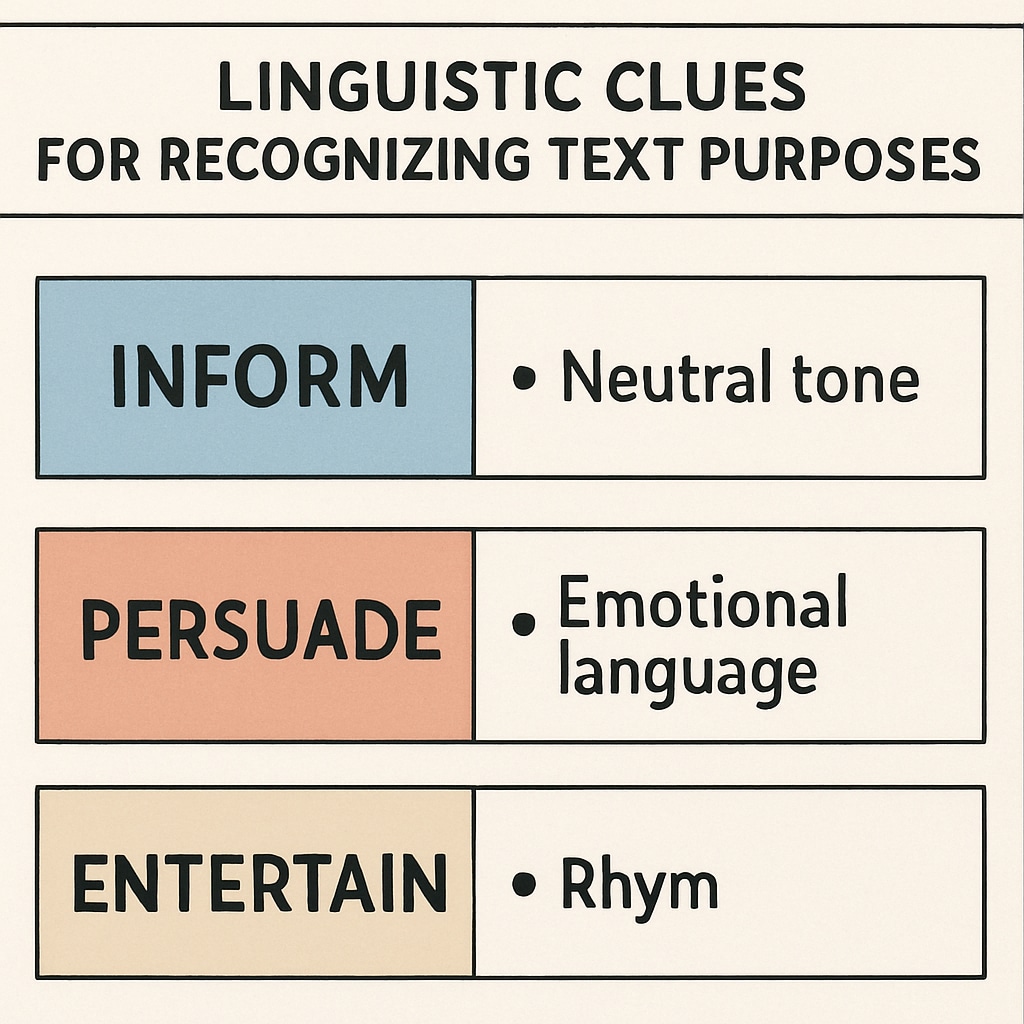For many students preparing for Functional Skills English Level 2 reading exams, identifying the purpose of a text—whether it aims to inform, explain, or persuade—can feel overwhelming. This skill is critical, as understanding the text’s intent allows for better comprehension and more accurate responses. In this article, we’ll break down systematic methods and practical tips to master this challenge, ensuring you approach the exam with confidence.
Understanding Text Purposes: A Quick Overview
The first step to success in Functional Skills English reading exams is understanding the key text purposes:
- Inform: The text provides factual information, often in a neutral tone. Examples include reports, instructions, and news articles.
- Explain: The text clarifies a concept, process, or idea. It often includes step-by-step guidance or detailed descriptions.
- Persuade: The text aims to influence the reader’s opinion or behavior, often using emotional language, rhetorical questions, or evidence to support its claims.
Recognizing these categories will help you focus on specific linguistic and structural elements within the text.

Strategies to Identify the Text Purpose
To determine the purpose of a text, follow these proven strategies:
- Analyze the title and headings: Titles often give clues about the text’s intent. For example, “How to Bake a Cake” indicates an explanatory purpose, while “Why Everyone Should Exercise Daily” suggests a persuasive angle.
- Pay attention to tone: Neutral, factual language typically indicates an informative purpose, while enthusiastic or emotional language often signals persuasion.
- Look for structural clues: Texts that are organized into steps or processes are likely explanatory. Persuasive texts often include arguments, counterarguments, and conclusions.
- Identify key phrases: Informative texts may use phrases like “according to research” or “data shows,” while persuasive texts often include “you must,” “it’s vital,” or “we believe.”
These strategies, combined with practice, will enhance your ability to quickly and accurately identify text purposes.

Practical Tips for Exam Success
In addition to understanding text purposes, follow these exam-specific tips:
- Practice with past papers: Familiarize yourself with the types of texts and questions commonly found in Level 2 exams.
- Time management: Allocate time to carefully read and analyze each text. Avoid rushing through questions.
- Underline key phrases: Marking important sections of the text can help you stay focused and identify its purpose quickly.
- Double-check your answers: Ensure your responses align with the text’s tone, structure, and language before moving on.
By applying these techniques, you’ll be well-equipped to handle even the trickiest reading passages.
Why Identifying Text Purpose Matters
Understanding the purpose of a text goes beyond exam success; it’s a lifelong skill. Whether you’re reading an article, a manual, or a persuasive advertisement, being able to identify intent enhances critical thinking and decision-making. For example, recognizing persuasion techniques can help you evaluate whether a product or service truly meets your needs.
As a result, mastering this skill not only boosts your performance in Functional Skills English reading exams but also empowers you in everyday life.
Final Thoughts: With these strategies, identifying text purposes becomes a straightforward process. Remember, practice is key, and the more you engage with diverse texts, the more confident you’ll become. Good luck!


